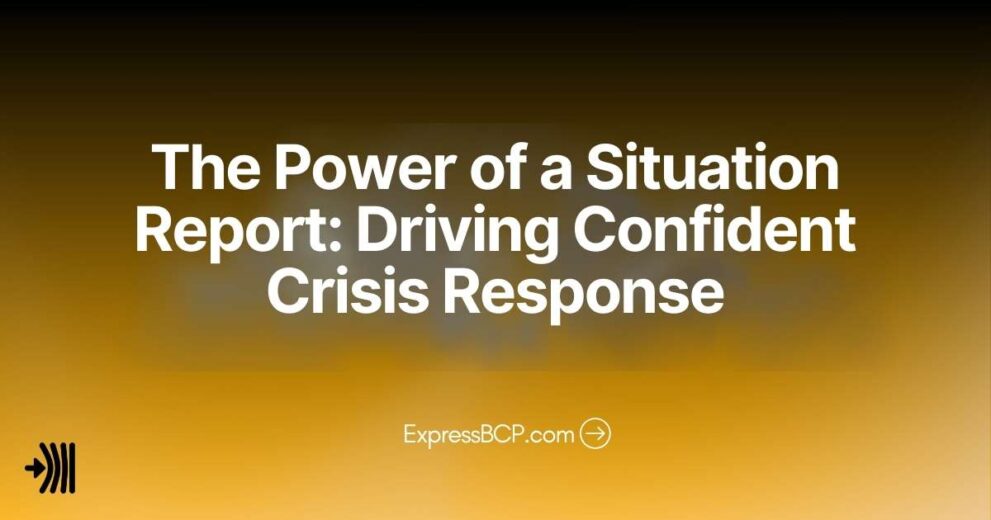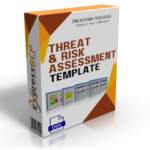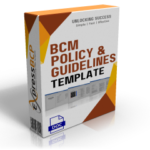Imagine this: 80% of companies that don’t have a structured crisis communication plan fail to recover within a year. That’s a staggering number. Now think about the tool that prevents your organization from becoming another statistic. Enter the situation report (SITREP).
A SITREP isn’t just a box to tick during a crisis. It’s the lifeline that gives you clarity when everything else feels like chaos. It keeps you calm, laser-focused, and ready to act. Think of it as the nerve center of your crisis response. It pulls everything together, making sure no detail is left behind. With the right SITREP, your team moves from overwhelmed to in control—confidently and predictably.
Let’s explore how a properly crafted SITREP can make or break your crisis response and ensure you’re not caught off guard when the heat is on.
Why a Situation Report is Your Crisis Command Center
In a crisis, timing is everything. Every minute that passes without clarity adds layers of confusion. A SITREP works as your timekeeper, constantly updating everyone on the latest developments, resources available, and next steps. It’s like having a 360-degree view of your crisis, letting you see the whole picture without missing critical details.
1. Instant Clarity in Chaos
When an incident happens, panic often sets in. That’s human nature. But a good SITREP cuts through the noise. It provides a clear, structured overview of what’s happening now, what’s being done, and what’s coming next. No more guessing. No more crossed wires. Everyone on your team knows where they stand and what to expect. And in a crisis, clarity equals confidence.
2. The Power of Real-Time Updates
Crises evolve quickly. What was true five minutes ago might no longer apply. A SITREP gives you real-time updates on the situation, helping your team adjust strategies on the fly. It’s not just about reacting—it’s about proactively managing the crisis as it unfolds. By keeping your reports live and dynamic, you stay one step ahead, ensuring that small problems don’t snowball into bigger ones.
3. Accountability and Decision-Making
A SITREP does more than just inform. It assigns responsibility. Each update outlines who’s handling what, making sure no task slips through the cracks. It also creates a record of decisions made during the crisis. This is crucial for learning and improvement later, but in the moment, it gives everyone the confidence that someone is always steering the ship.
4. Communicating with Stakeholders
When chaos hits, your team isn’t the only group in need of updates. A well-constructed SITREP allows you to communicate clearly with external stakeholders—executives, partners, regulators, and even customers. It translates internal chaos into actionable information that keeps everyone in the loop without overwhelming them.
Crafting the Perfect SITREP
Now that we know why a SITREP is invaluable, let’s break down what goes into making one that truly works. It’s not just about listing facts—it’s about making the information digestible and actionable. Here’s how you can build a SITREP that delivers results:
- Situation Overview: Keep it short. What happened? When did it happen? Where did it happen? Summarize the key points in one or two sentences. Don’t overcomplicate it.
- Current Actions: What are you doing right now to address the issue? List the immediate actions being taken. Be clear about who’s responsible for each step.
- Resources Available: What do you have at your disposal? Whether it’s people, continuity plans, equipment, or external support, ensure your team knows what they can use.
- Known Risks and Challenges: Lay out any obstacles that might impact the response. This could be anything from resource shortages to potential reputational damage. The goal here is to be transparent about hurdles so they can be addressed head-on.
- Next Steps: What’s coming next? This section tells your team (and stakeholders) where you’re heading and keeps them aligned with your game plan. It should include timelines and actions required to bring the situation closer to resolution.
- Triggers for Escalation: Not every crisis stays at the same intensity. Define clear escalation triggers in your SITREP. These could be things like additional system failures, breaches of safety protocols, or a worsening public perception. When these triggers are hit, the response needs to step up to the next level—whether that means involving higher-level decision-makers or mobilizing additional resources. Knowing when to escalate ensures you’re not blindsided as the crisis evolves.
- Triggers for De-escalation: Equally important, identify when it’s time to scale back. As the crisis stabilizes, you’ll want to avoid over-committing resources or escalating unnecessarily. De-escalation triggers might include the containment of a problem, risk mitigation, or improved public sentiment. Knowing these markers helps you return to business-as-usual operations efficiently and with minimal disruption.
- Contacts: Include a list of key personnel involved in the crisis management team and their roles. Make sure everyone knows who to reach out to for updates or decisions.
By incorporating triggers for escalation and de-escalation, your SITREP becomes an even more powerful tool. It helps guide not just the current response, but also the level of response needed as conditions shift. This proactive approach ensures that your team is always on the front foot, rather than scrambling to catch up.
Driving a Confident Response
So, how does a SITREP drive a predictable and confident response? Simple. It removes ambiguity. By continually updating the SITREP, you’re giving your team real-time insights. Everyone knows the current state of play, what’s expected of them, and what to expect in return. There’s no room for second-guessing, only action.
Confidence in a crisis isn’t about knowing everything—because let’s be honest, no one does. It’s about having the tools and information at your fingertips to make the best decisions in real-time. A good SITREP doesn’t just help you manage the crisis. It helps you own it.
Final Thoughts: Don’t Wait for the Storm
Crisis planning is more than just theory. It’s practical, hands-on, and absolutely essential. The situation report is your lifeline when the storm hits, guiding your team to make confident, coordinated decisions. But here’s the key: don’t wait for a crisis to start building your SITREP. Practice it. Make it part of your regular crisis exercises, and when the time comes, it’ll be second nature.
Because when a crisis hits, you don’t want to be scrambling. You want to be ready.







